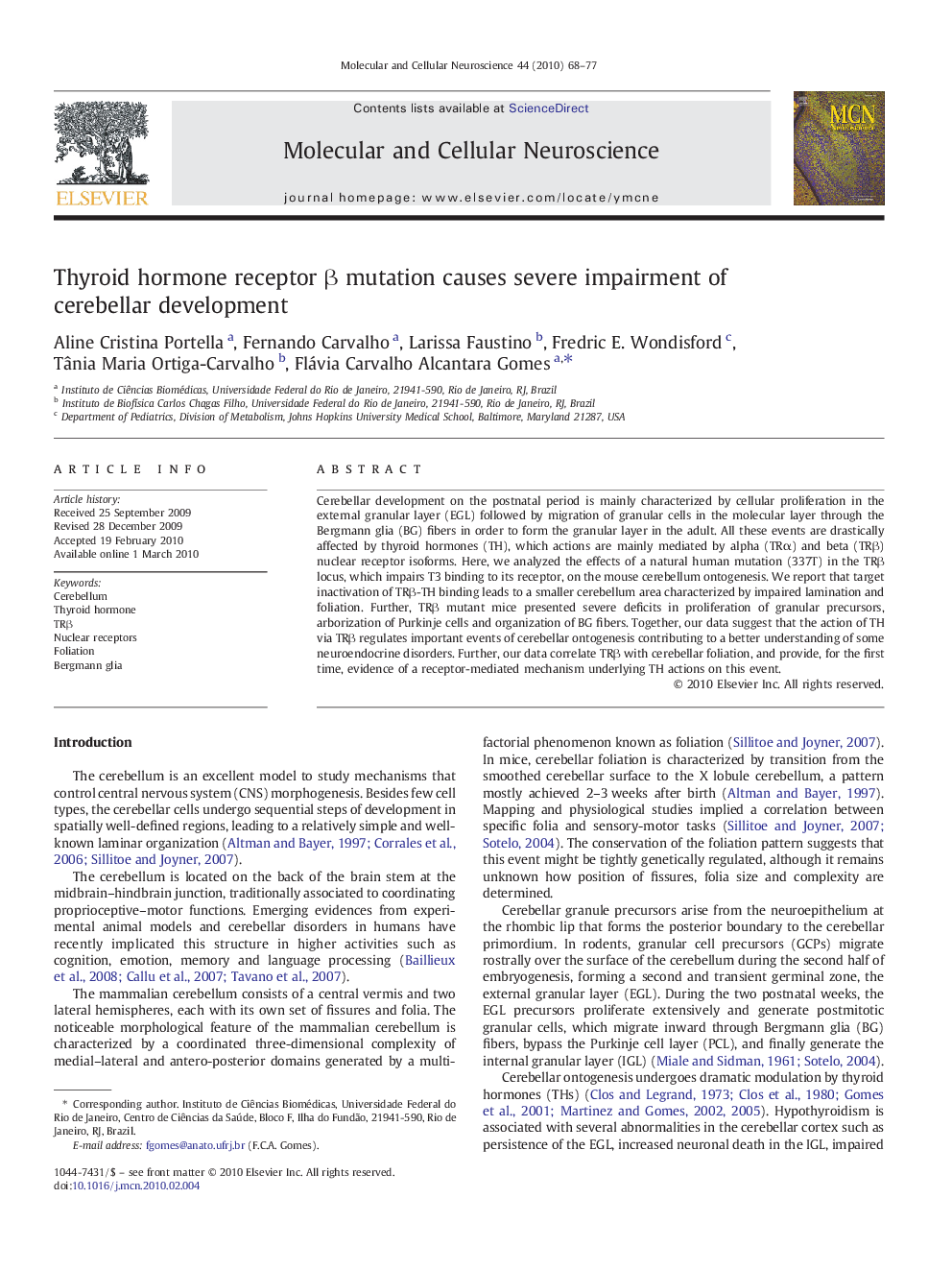| Article ID | Journal | Published Year | Pages | File Type |
|---|---|---|---|---|
| 2198718 | Molecular and Cellular Neuroscience | 2010 | 10 Pages |
Cerebellar development on the postnatal period is mainly characterized by cellular proliferation in the external granular layer (EGL) followed by migration of granular cells in the molecular layer through the Bergmann glia (BG) fibers in order to form the granular layer in the adult. All these events are drastically affected by thyroid hormones (TH), which actions are mainly mediated by alpha (TRα) and beta (TRβ) nuclear receptor isoforms. Here, we analyzed the effects of a natural human mutation (337T) in the TRβ locus, which impairs T3 binding to its receptor, on the mouse cerebellum ontogenesis. We report that target inactivation of TRβ-TH binding leads to a smaller cerebellum area characterized by impaired lamination and foliation. Further, TRβ mutant mice presented severe deficits in proliferation of granular precursors, arborization of Purkinje cells and organization of BG fibers. Together, our data suggest that the action of TH via TRβ regulates important events of cerebellar ontogenesis contributing to a better understanding of some neuroendocrine disorders. Further, our data correlate TRβ with cerebellar foliation, and provide, for the first time, evidence of a receptor-mediated mechanism underlying TH actions on this event.
